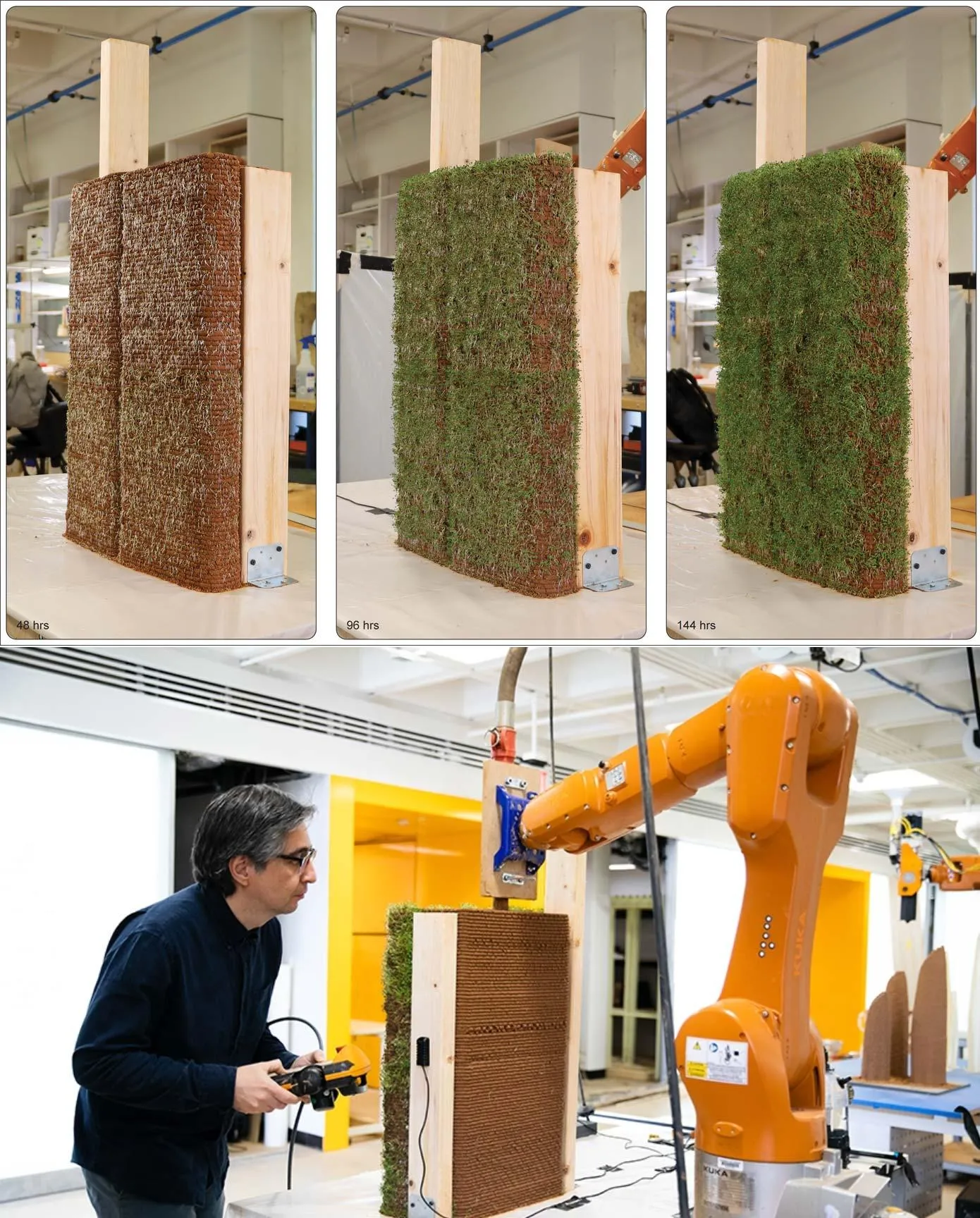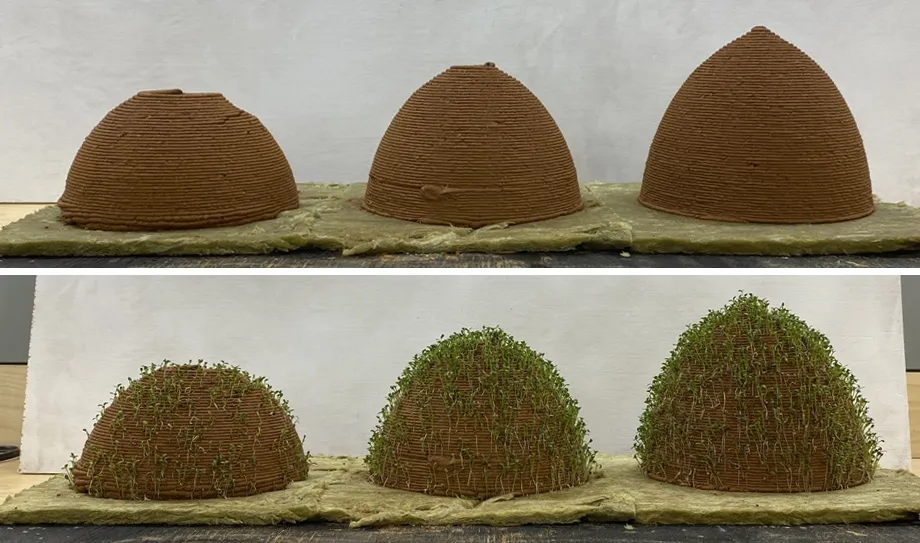“Ecologically Active Structure“ was designed and developed by the research team of Ehsan Baharlou (Architecture Department), Ji Ma (Material Science and Engineering Department), and David Carr (Environmental Sciences Department). The research team has been selected to participate in the Venice Architecture Biennale 2025 and will be presented as part of the French Pavilion curated by Jakob + MacFarlane agency. The French pavilion is organized by the Ministry of Culture and the Ministry for Europe and Foreign Affairs, allowing visitors to explore 6 themes.
“Ecologically active structures” is a 3D-printed soil structure that can grow plants. It is an integration of material and fabrication methods that helped develop an alive living structure with limited local resources. This research aims to examine the feasibility of a 3D-printed structure’s potential in growing greenery. Research and experimentation by Ehsan, Ji Ma, and the David team of the Computational Tectonics Lab was done with an exterior 3D printed section with seed germination. This design philosophy of combining additive manufacturing with sustainable development practice is referred to as the circular economy.

The team together explored and proved a 3D printed geometrically complex structure composed of soil and seed is constructible, creating a unique bio-based construction. The ü 3D printed structure is an example of printing that combines cost efficiency, additive manufacturing, and speedy construction utilizing bio-based local materials. The self-supporting 3D-printed soil structure is made of an admixture of soil without any additives. Germination and growth of plants have been embedded between the 3D printed layers that require proper water control for their growth. The research team has extensively examined the water retention of soil particles correlated to the growth of plants, observing how the extruded soil can maintain its structure.
Baharlou’s team has mentioned that the 3D-printed soil structures support plant growth but are likely to be limited to plants that survive with little water. This project utilizes local resources, which is a sustainable system that has the potential to absorb carbon emissions. The Ecologically active structure is a unique submission to the French Pavilion in this year’s Venice Biennale.
Technical Information
A. Material system
- Abiotic component – Composed of a local soil admixture
2. Biotic component – White Clover (Trifolium repens L.)
B. 3D printing Robotic system setup
1. A Wall prototype – A passive extruder and progressive cavity pump – IMER Small 50 EVO assembled at Kuka (KR 10 R1100-2).

Ecologically Active Structure project details
Project name: Ecologically Active Structure
Location: French Pavilion, Venice Biennale
Architect: Ehsan Baharlou (Architecture Department), Ji Ma (Material Science and Engineering Department), and David Carr (Environmental Sciences Department)
Program: Venice Biennale
Year: 2025
Photography: Computational Tectonics Lab, University of Virginia


















Leave a comment